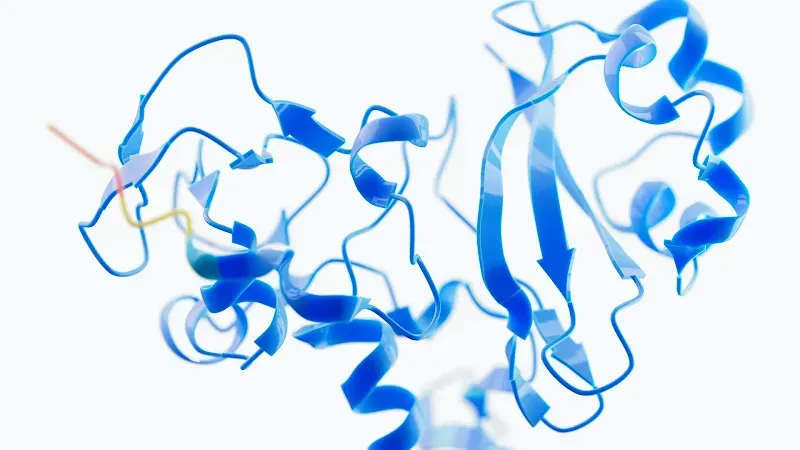business resources
David Baker, Demis Hassabis, And John M. Jumper: The 2024 Chemistry Nobel Prize Recognises AI-Assisted Research In Protein Structure And Design
10 Oct 2024, 5:04 pm GMT+1
David Baker, Computational biologist David Baker, professor of biochemistry at the University of Washington School of Medicine and director of the UW Medicine Institute for Protein Design, won “for computational protein design”. Google DeepMind Director, Dr. John Jumper, and Co-founder and CEO of Google DeepMind and Isomorphic Labs, Sir Demis Hassabis, were honoured for “protein structure prediction”.
The Nobel Prize in Chemistry 2024 is about proteins, life’s ingenious chemical tools. David Baker has succeeded with the almost impossible feat of building entirely new kinds of proteins. Demis Hassabis and John Jumper have developed an AI model to solve a 50-year-old problem: predicting proteins’ complex structures. These discoveries hold enormous potential.
The Chemistry Nobel is the third to be announced, and the second Nobel Prize this year that recognizes AI. The physics prize was awarded on October 8 to John Hopfield and Geoffrey Hinton, who did foundational work on artificial neural networks.
“One of the discoveries being recognised this year concerns the construction of spectacular proteins. The other is about fulfilling a 50-year-old dream: predicting protein structures from their amino acid sequences. Both of these discoveries open up vast possibilities,” says Heiner Linke, Chair of the Nobel Committee for Chemistry.
The total prize of 11 million Swedish kronor, or roughly $1 million, will be divided between the three laureates. Baker will receive half, and Hassabis and Jumper will split the rest.
AI assists in unearthing the chemical structures and design of proteins
Proteins play a crucial role in nearly all biological processes, making them a key focus for scientific research. Proteins are composed of long chains of amino acids, which fold into intricate three-dimensional structures. These structures determine a protein’s function, from transporting oxygen in the body to aiding in digestion.
“If chemists know a protein’s amino acid sequence, they should be able to predict the protein’s three-dimensional structure,” the Nobel website says.
Johan Åqvist, a member of the Nobel Committee for Chemistry, said during the news conference: “In order to understand how proteins work, you need to know what they look like. That’s what this year’s laureates have done.”
By combining the power of AI with decades of biological research, Hassabis and Jumper made significant advancements in protein structure prediction through their AI model AlphaFold. This model achieved an initial accuracy of 60 per cent, a major feat in 2018, though further breakthroughs came after Jumper joined the project, resulting in far greater accuracy in predicting protein structures.

David Baker’s work in Rosetta
David Baker first made a significant mark in 1998 with the development of Rosetta, a computational tool capable of predicting the 3D structure of proteins based on short amino acid sequences.
But the true innovation came in 2003 when Baker and his team reversed the process—inputting a designed 3D structure into Rosetta and asking it to generate an amino acid sequence that would fold into that specific shape. Remarkably, the software succeeded, and when the designed protein was synthesised in the lab, it folded exactly as predicted by Rosetta.
"David Baker opened up a completely new world of protein structures that we had never seen before," noted Johan Åqvist. “It’s almost as if only your imagination sets the limit for what you can do.”
Since then, Baker's lab has developed a range of custom-designed proteins, including one that can detect fentanyl in the environment and another that blocks the coronavirus.
Neuroscientist Leslie Vosshall, who has utilised Rosetta in her lab at Rockefeller University. She says: “These software algorithms have accelerated the ability of all scientists to do their work. What used to take decades or forever can now take a minute.”
“Designing” the future of humanity with AI in research
The ability to design proteins with specific functions marks a revolution in the fields of biotechnology, medicine, and drug development. Custom-designed proteins hold the promise of developing targeted pharmaceuticals, creating novel vaccines, and even designing sustainable materials that could help mitigate the environmental crisis.
Despite the success of AlphaFold, the complexities of predicting protein interactions in large biological systems remain a challenge. What further advancements can be achieved if we push the boundaries of this technology? Could we eventually create a complete map of the "protein universe", where the structure and function of every protein are known, enabling targeted interventions in nearly all aspects of human health?
The integration of AI into biological research, on the other hand, is becoming an accelerator for solving some of the most complex problems in science. How will AI’s role evolve in the coming years? Will it drive further interdisciplinary collaborations that combine computational power with biological insights to redesign our approach to medicine, environmental sustainability, and technology?
Share this
Pallavi Singal
Editor
Pallavi Singal is the Vice President of Content at ztudium, where she leads innovative content strategies and oversees the development of high-impact editorial initiatives. With a strong background in digital media and a passion for storytelling, Pallavi plays a pivotal role in scaling the content operations for ztudium's platforms, including Businessabc, Citiesabc, and IntelligentHQ, Wisdomia.ai, MStores, and many others. Her expertise spans content creation, SEO, and digital marketing, driving engagement and growth across multiple channels. Pallavi's work is characterised by a keen insight into emerging trends in business, technologies like AI, blockchain, metaverse and others, and society, making her a trusted voice in the industry.
previous
Healthcare's Digital Renaissance Is Transforming Professional Networking
next
Ready to Kickstart Your Biz with Custom Injection Molding? Here's What You Need to Know